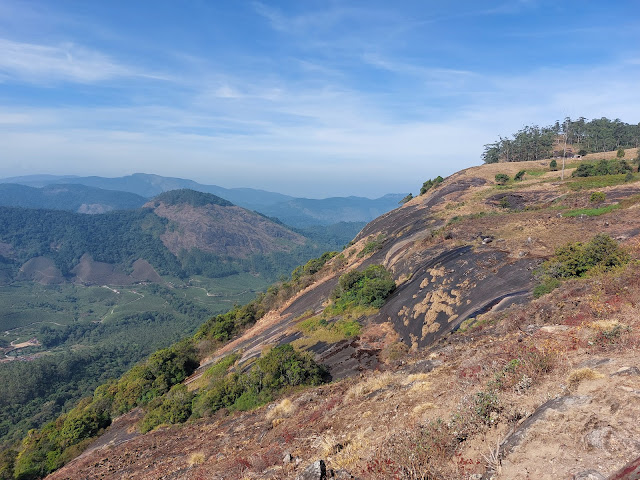Black-and-orange flycatcher is the iconic Western Ghats endemic that is high
on the most wanted list of any birder who visits Munnar. It's not that rare
within it's range but it can be quite elusive and difficult to see. Today we
hired a birding guide who took us first to the magnificent Erivakulam National Park just north of the town of Munnar and then around various other nearby
hotspots.
Pretty soon we found the star bird, initially the female above and then later
a couple of males.
The great thing about Erivakulam is it gets you out of the tea plantations and
eucalyptus trees that dominant much of the hillsides and allows you to
concentrate on species that favour grasslands and other open areas.
After buying tickets you then have to get onto a bus which takes you for about two
miles through tea plantations.
It's hot, tough work for the tea pickers!
As you get higher the scenery gets ever more impressive.
This area of the Western Ghats has the highest peaks in India, south of the
Himalayas, with Anamudi reaching 2695m.
However, before I even get onto the birds, I should mention first the Nilgiri
tahr, a type of goat and the real reason why Erivakulam is a National Park.
The park even closes in February and March to avoid disturbance while these
animals give birth.
A baby Nilgiri tahr.
Nilgiri pipit, one of the larger pipits.
This is White-bellied sholakili.
White-bellied sholakili.
Pied bushchat.































No comments:
Post a Comment